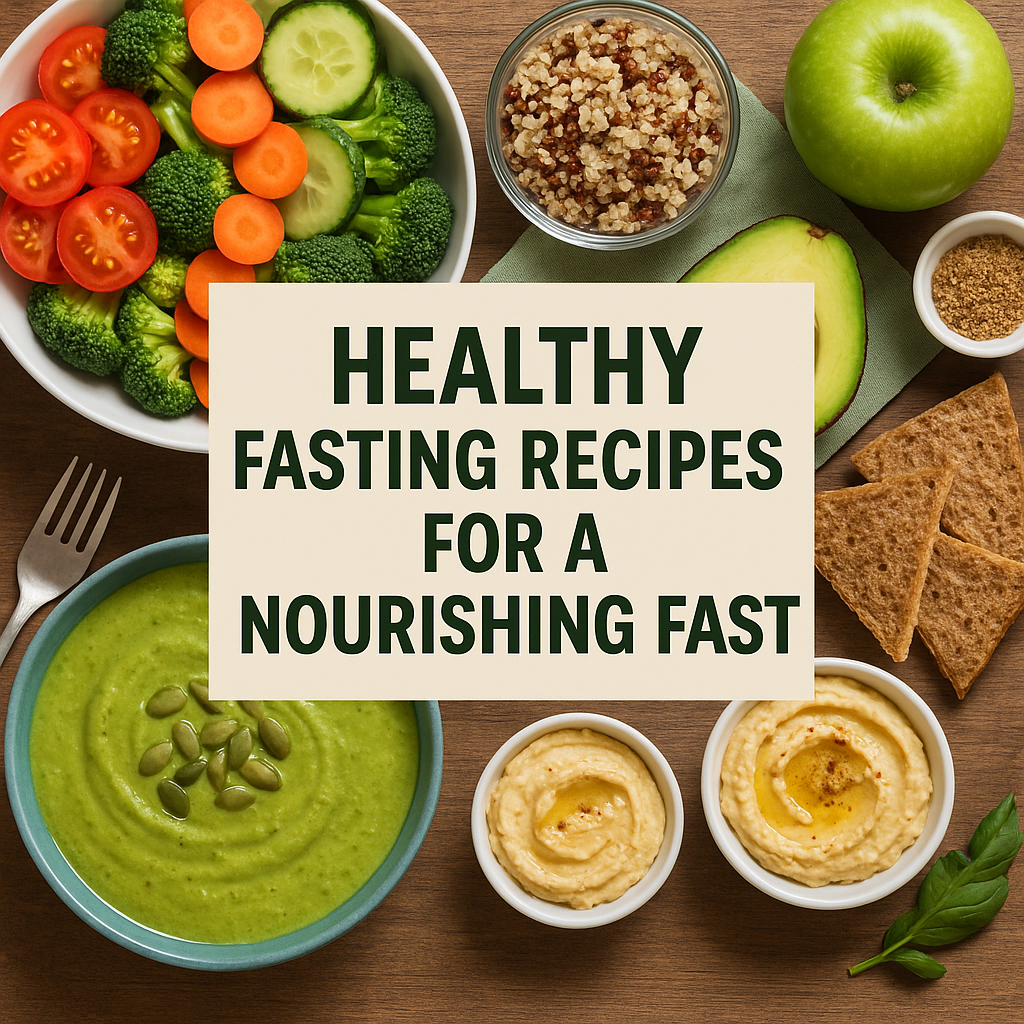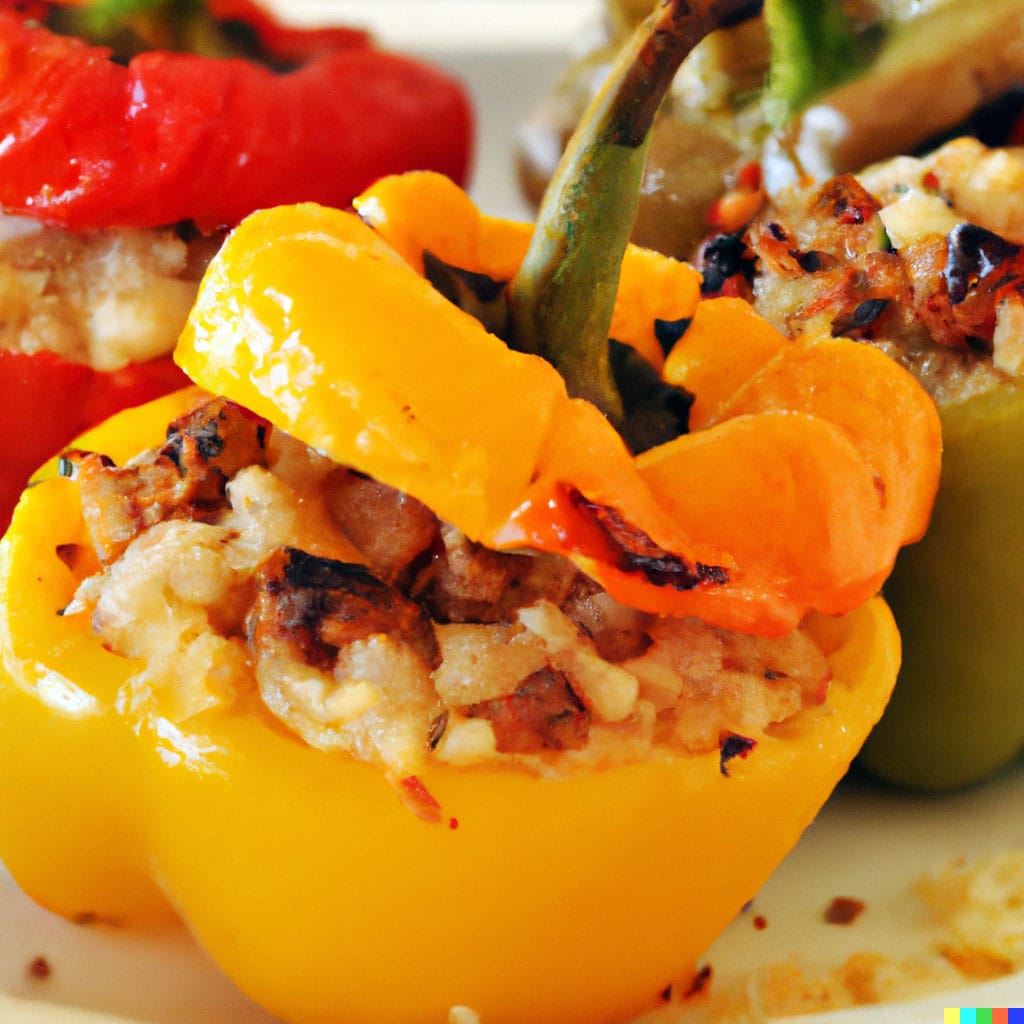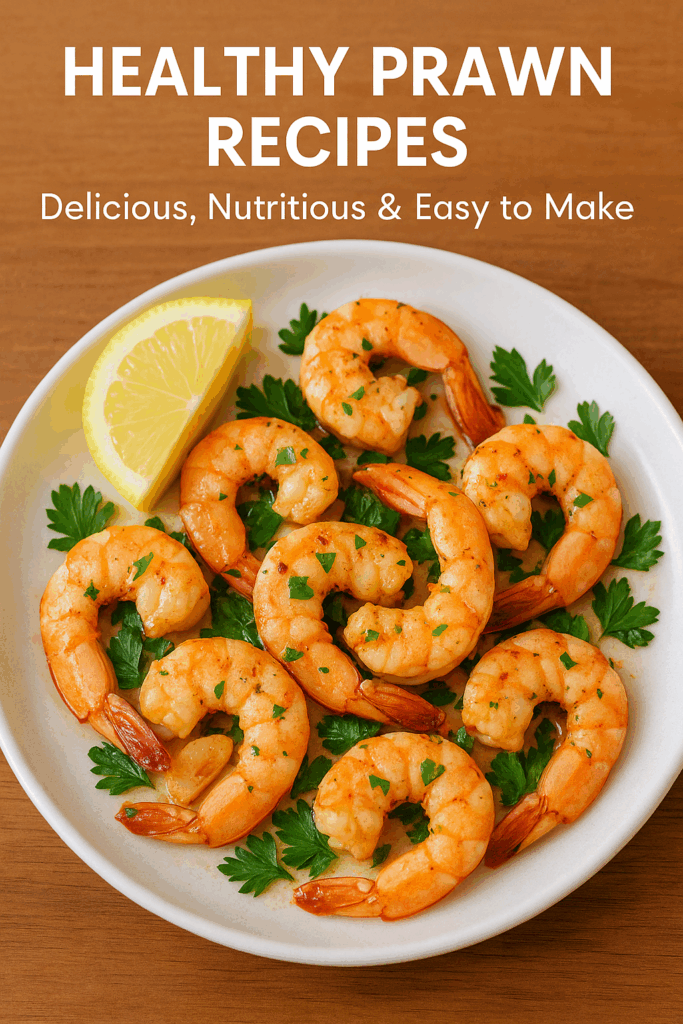Whether it’s for Ekadashi, Navratri, or just to give your digestive system a rest, fasting is an essential component of many Indian customs. But “fasting” does not have to involve consuming tasteless or empty calories. Using the appropriate materials and methods, you can enjoy healthy fasting recipes that keep you energized, satisfied and in keeping with the fast. We’ve put together a list of delectable, healthy, and simple Indian fasting recipes in this post. Let’s get started!
Why Choose Healthy Fasting Recipes?
Maintain Energy Levels: Protein and complex carbs may be lacking in traditional fasting foods. You can avoid mid-afternoon energy crashes by selecting healthy ingredients such as millet, fruits, and nuts.
Support Digestion: Recipes for fasting that contain easily digested ingredients (like makhana and sabudana) help prevent discomfort and bloating, so your fast stays comfortable.
Balanced Nutrition: Breaking a fast with nutrient-dense foods helps your body recover and maintain immunity by resupplying vitamins, minerals, and antioxidants.
Taste and Variety: Who said meals during a fast had to be dull? You can have a tasty spread that tastes like a treat if you use the correct spices (rock salt, cumin, fennel seeds) and textures (soft potato cubes, crunchy makhana).
By focusing on healthy fasting recipes, you can honour tradition without sacrificing taste, nutrition, or well-being.
Top Indian Healthy Fasting Recipes
Eight tried-and-true fasting recipes are listed below. Suji, sabudana, makhana, fruits, nuts, and specific flours are among the ingredients that are permitted during the majority of Indian fasts. If your fast allows, feel free to substitute rock salt (sendha namak) for ordinary salt; however, always refer to your particular fasting instructions.
1. Sabudana Khichdi
Ingredients
- 1 cup sabudana (tapioca pearls)
- 2 medium potatoes, peeled and diced
- 2 green chillies, slit (optional)
- ½ cup roasted peanuts, coarsely crushed
- 1 tsp cumin seeds
- 1–2 tbsp ghee or oil
- Rock salt (sendha namak) to taste
- Fresh coriander leaves, chopped (for garnish)
- Lemon wedges (to serve)
Instructions
Soak Sabudana:Sabudana should be soaked in cold water until it runs clear. Soak it for four to five hours or overnight in enough water to cover it.
Cook Potatoes: by heating oil or ghee in a pan. Let the cumin seeds splutter after adding them. Add the diced potatoes and cook until they start to get a little golden.
Add Chilies & Spices: Add a pinch of black pepper, rock salt, and slit green chillies.
Combine Sabudana: Add the soaked, drained sabudana. Stir gently to combine. Let it cook on low heat for 5–7 minutes, stirring occasionally. The pearls should turn translucent.
Finish with Peanuts: Fold in crushed roasted peanuts. Cook another minute.
Garnish & Serve: Top with fresh coriander and squeeze a lemon wedge over each serving.
Pro Tip: If sabudana seems sticky, sprinkle a tablespoon of water and gently fluff with a spoon to separate the pearls.
2. Makhana (Fox Nut) Chivda
Ingredients
- 2 cups makhana (fox nuts)
- 1 tbsp ghee
- ½ tsp cumin seeds
- 1–2 green chillies, finely chopped (optional)
- 8–10 curry leaves
- ½ tsp crushed black pepper
- Rock salt to taste
- A handful of roasted peanuts (optional)
- Fresh coriander leaves, chopped (for garnish)
Instructions
- Roast Makhana:Dry roast makhana in a heavy-bottom pan over low heat for 8 to 10 minutes, or until they are crisp. Transfer to a bowl.
- Temper Spices:Heat the ghee in the same pan. Let the cumin seeds splutter after adding them. Add curry leaves and chopped green chilies. Sauté for 30 seconds.
- Toss Makhana: Return roasted makhana to the pan. Sprinkle rock salt and crushed black pepper. Mix gently so each piece is coated in spice and ghee.
- Optional Peanuts:Add the peanuts now and toss lightly if using.
- Garnish & Serve: Garnish with fresh coriander. Serve as a crunchy, low-calorie snack during your fast.
Why It’s Healthy: Makhana is low in calories, high in protein, and packed with antioxidants—making it one of the best healthy fasting recipes.
3. Rajgira (Amaranth) Pattice
Ingredients
- 1 cup rajgira flour (amaranth flour)
- 2 medium potatoes, boiled and mashed
- 1 green chilli, finely chopped (optional)
- 1 tbsp chopped coriander leaves
- Rock salt to taste
- Water as needed
- 2–3 tbsp ghee or oil (for shallow frying)
Instructions
- Make Dough: In a bowl, mix rajgira flour and mashed potatoes. Add green chilli, coriander leaves, and rock salt. Gradually add warm water (1–2 tbsp at a time) to knead into a soft dough.
- Form Pattice: Divide dough into lemon-sized balls. Flatten each ball between palms to form a small patty (~¼ inch thick).
- Cook Pattice: Heat ghee or oil in a non-stick pan. Shallow fry each patty on both sides until golden brown and crisp (about 2–3 minutes per side).
- Serve Hot: Plate the hot patties and serve immediately. You can enjoy them with a side of yoghurt (if permitted) or just as-is.
Nutrition Note: Rajgira is gluten-free, high in protein, and rich in calcium and iron, making these patties one of the top healthy fasting recipes.
4. Kuttu (Buckwheat) Dosa
Ingredients
- 1 cup kuttu (buckwheat) flour
- ½ cup yoghurt (curd)
- 1 green chilli, finely chopped (optional)
- 1 tsp cumin seeds
- Rock salt to taste
- Water as needed
- Ghee or oil for cooking
Instructions
- Prepare Batter: In a bowl, combine kuttu flour, yoghurt, chilli (if using), cumin seeds, and rock salt. Gradually whisk in water to achieve a pourable dosa batter consistency (similar to pancake batter).
- Heat Griddle: Preheat a non-stick tava (griddle) on medium heat. Grease lightly with ghee.
- Make Dosa: Pour a ladle of batter and spread in a circular motion. Drizzle a little ghee around the edges. Cook until the edges lift and the underside is golden and crisp. Flip and cook briefly on the other side.
- Serve: Remove and serve hot with green chutney or tamarind-date chutney (check fasting permit).
Why It Works: Buckwheat is a complex carbohydrate, keeping blood sugar levels stable throughout your fast. This dosa is one of the more filling, healthy fasting recipes you can choose.
5. Singhare (Water Chestnut) Flour Pakora
Ingredients
- 1 cup singhara (water chestnut) flour
- 1 small potato, grated (optional for binding)
- 1 green chilli, finely chopped (optional)
- ½ tsp cumin seeds
- Rock salt to taste
- Water as required
- Oil for deep frying
Instructions
- Make Batter: In a bowl, combine singhare flour, grated potato (if using), green chilli, cumin seeds, and rock salt. Add water sparingly to form a thick, spoonable batter.
- Heat Oil: Heat oil in a deep pan on medium flame.
- Fry Pakoras: Drop spoonfuls of batter into the hot oil. Fry until golden brown and crisp, turning occasionally for even cooking (about 3–4 minutes).
- Drain & Serve: Remove with a slotted spoon, drain excess oil on paper towels, and serve hot.
Pro Tip: If your fast restricts potatoes, skip the grated potato and use a little arrowroot starch (as a binding agent) instead.
6. Fruit & Nut Salad with Honey-Lemon Dressing
Ingredients
- 1 cup mixed seasonal fruits (apple, banana, pomegranate, papaya)
- ¼ cup roasted almonds and walnuts, chopped
- 1 tbsp honey
- Juice of half a lemon
- A pinch of rock salt and black salt
- Fresh mint leaves, chopped (for garnish)
Instructions
- Chop Fruits: Dice all fruits into bite-sized pieces and place in a mixing bowl.
- Prepare Dressing: In a small bowl, whisk together honey, lemon juice, a pinch of rock salt, and black salt.
- Combine & Toss: Pour the dressing over the fruits and gently toss to coat evenly.
- Add Nuts and garnish: Sprinkle chopped nuts and fresh mint leaves. Serve immediately.
Why It is Great: Packed with vitamins, antioxidants, and healthy fats, this salad rates high on the list of refreshing, healthy fasting recipes, especially when you need a light and energizing dish.
7. Makhana Kheer
Ingredients
- 2 cups milk (use almond milk or non-dairy milk if dairy is restricted)
- 1 cup makhana (fox nuts)
- 2 tbsp sugar or jaggery (adjust as needed)
- ½ tsp cardamom powder
- 1 tbsp chopped almonds and pistachios
Instructions
- Roast Makhana: In a pan, dry roast makhana until crisp. Let cool and lightly crush half of them; keep the rest whole.
- Cook Base: In another saucepan, bring milk to a gentle simmer. Add crushed makhana and let it cook for 5–7 minutes on low flame, stirring occasionally.
- Add Sweetener and spices: Stir in sugar (or jaggery) and cardamom powder. Continue cooking until the mixture thickens to your preference.
- Finish & Garnish: Add the whole roasted makhana. Garnish with chopped almonds and pistachios. Serve warm or chilled.
Nutrition Highlight: Full of protein and calcium, makhana kheer is a decadent yet wholesome addition to your fasting menu, making it one of the standout healthy fasting recipes.
8. Fruit-cucumber raita (Yogurt Dip)
Ingredients
- 1 cup plain yoghurt (or dairy-free yoghurt)
- ½ cucumber, finely chopped
- ½ cup mixed fruits (apple, pomegranate seeds, grapes), chopped
- Rock salt and black salt to taste
- ½ tsp roasted cumin powder
- Fresh coriander leaves, chopped (for garnish)
Instructions
- Whisk Yogurt: In a bowl, whisk yogurt until smooth.
- Mix Veggies & Fruits: Add chopped cucumber and mixed fruits to the yoghurt.
- Season & Finish: Season with rock salt, black salt, and roasted cumin powder. Stir gently.
- Garnish & Serve: Top with fresh coriander and serve chilled.
Why It Works: This cooling raita balances out spicy dishes and hydrates you—an ideal complement to heavier, healthy fasting recipes.
Tips for Optimizing Your Fasting Meals
- Stay Hydrated: Drink plenty of water, coconut water, or fresh fruit juices (without added sugar) between meals. Dehydration can lead to fatigue and headaches.
- Gradual Portion Control: Instead of overeating when breaking the fast, consume small portions of nutrient-dense foods. This reduces digestive strain and prevents lethargy.
- Use Rock Salt and Spices Wisely: Many fasting guidelines allow “sendha namak” (rock salt) and certain spices (cumin, ajwain, pepper). These enhance flavour without violating the fast.
- Avoid Heavy Oils and refined Flour: Stick to ghee, light oils (sunflower, peanut), and flours permitted during fasting (buckwheat, amaranth, water chestnut). This ensures your meals remain healthy fasting recipes rather than calorie bombs.
- Plan Ahead: Pre-soak sabudana or makhana, prepare batters and chop vegetables in advance. This saves time, especially on the mornings of fast days.
Conclusion
There is no need to sacrifice flavor or nutrition when fasting. Premium ingredients like rajgira, makhana, sabudana, and seasonal fruits can be used to create wholesome fasting recipes that satisfy your cravings and support your spiritual or medical objectives. These recipes will keep you feeling content and invigorated whether you’re celebrating Ekadashi, Navratri, or a personal cleanse. The next time you fast, try one (or all!) of these recipes to enjoy the ideal harmony of flavor, health, and custom.
Are you prepared to learn more? Remember to explore our other healthy meal suggestions, including smoothies, breakfast bowls, and salads, that fit seamlessly into your daily routine all year long.
Ready to explore more? Don’t forget to check out our other healthy meal ideas for salads, breakfast bowls, and smoothies that complement your lifestyle year-round.
FAQs (Optional)
Q1: Can I substitute ghee with oil in makhana chivda?
A1: Yes, you can use light oils like peanut or sunflower oil. Ghee, on the other hand, adds a deeper flavor and is frequently suggested for recipes involving fasting.
Q2: Are these recipes suitable for diabetic individuals?
A2: The majority of the dishes here emphasize protein and complex carbs. Everybody has different nutritional needs, so talk to your doctor and change the amount of sugar (e.g., use jaggery sparingly in kheer).
Q3: Can I make these recipes vegan?
A3: Absolutely. Swap dairy products (yogurt, milk, ghee) with plant-based alternatives (coconut yogurt, almond milk, coconut oil).
Q4: How many times can I repeat the same fasting recipe?
A4: It’s best to rotate dishes so your body receives varied nutrients. You can repeat once a week, mixing in other options to avoid nutrient gaps.
Q5: Can I prep these recipes in bulk?
A5: Yes, dishes like sabudana khichdi, makhana chivda, and rajgira practice can be partially prepped (soaking, roasting) a day ahead. Just finish cooking on the day of your fast for optimal taste.



